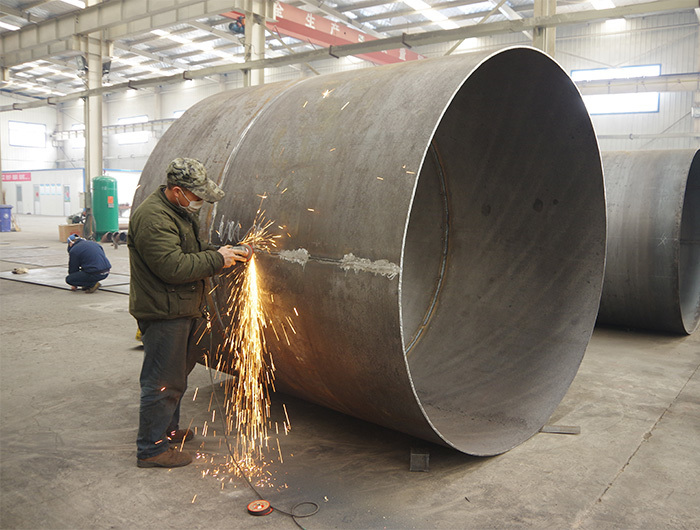NEWS
Biomass gasification is the process of converting solid biomass
2020-11-11
Biomass gasification is the process of converting solid biomass (wood chips, branches, organic household waste, agricultural and forestry waste, etc.) into combustible biomass synthesis gas. By controlling the reaction process, carbon, hydrogen, and oxygen are chemically reacted. It is synthesized into combustible components such as carbon monoxide, hydrogen and methane, and most of the energy in biomass raw materials is transferred to biomass synthesis gas. This is the gasification process of biomass gasifier.
The generation principle of biomass synthesis gas: biomass raw materials enter the reactor of the gasification furnace, after being heated and dried, and then as the temperature rises, its volatile matter is precipitated and pyrolyzed (cracked) at high temperature. The pyrolyzed gas and production The substance undergoes a combustion reaction with the supplied air in the oxidation zone to produce CO2 and water vapor. The heat generated by combustion is used to maintain drying, pyrolysis and endothermic reactions in the lower reduction zone. The gas produced after combustion passes down the reduction zone and reacts with the high-temperature carbon layer (C+CO2=2CO, C+HO2=H2+CO) to generate biomass synthesis gas containing CO, H2, CH4, CmHn, etc. It is drawn from the bottom, and is sent out for use after the purification system removes impurities such as tar. The ash is discharged from the lower part of the gasifier.
The generator set control module adopts the microprocessor-based generator set control technology, which has many functions such as automatic data recording, automatic operation, automatic control, automatic protection, etc., and has good reliability and stable performance. The operating parameters of the unit are displayed by a large-screen LCD, which displays large and accurate data.


LAST NEWS
The generator set control module adopts the microprocessor-based
The generation principle of biomass synthesis gas: biomass raw materials enter the reactor of the gasification furnace, after being heated and dried, and then as the temperature rises, its volatile matter is precipitated and pyrolyzed (cracked) at high temperature. The pyrolyzed gas and production The substance undergoes a combustion reaction with the supplied air in the oxidation zone to produce CO2 and water vapor. The heat generated by combustion is used to maintain drying, pyrolysis and endothermic reactions in the lower reduction zone. The gas produced after combustion passes down the reduction zone and reacts with the high-temperature carbon layer (C+CO2=2CO, C+HO2=H2+CO) to generate biomass synthesis gas containing CO, H2, CH4, CmHn, etc. It is drawn from the bottom, and is sent out for use after the purification system removes impurities such as tar. The ash is discharged from the lower part of the gasifier. The generator set control module adopts the microprocessor-based generator set control technology, which has many functions such as automatic data recording, automatic operation, automatic control, automatic protection, etc., and has good reliability and stable performance. The operating parameters of the unit are displayed by a large-screen LCD, which displays large and accurate data.
which is convenient for transportation and installation
Biomass gasifier is composed of furnace body system, dust removal system, cooling system, tar purification system, tar separation system, Roots blower, electrical control system, etc. The syngas generator set is mainly composed of a gas engine, a three-phase AC synchronous engine, a control cabinet, a common chassis and a gas source link part. The KX series biomass synthesis gas power generation system adopts modular design, which is convenient for transportation and installation. The KX series biomass gasifier is a downdraft, fluidized bed biomass gasifier independently designed and developed for the needs of biomass synthesis gas power generation. This series of biomass gasifier uses PLC intelligent system control The system fully realizes long-term fully automatic work. And the dry purification technology used in the gasifier avoids secondary water pollution to the natural environment. Moreover, the raw materials are highly adaptable, requiring the size of the biomass raw materials to be ≤30mm and the moisture content ≤20%. Pass various biomass raw materials through the gasifier for drying, cracking, oxidation and reduction to produce biomass synthesis gas, and then the biomass synthesis gas is cooled, dusted, and cooled to remove tar and impurities in the gas, and the processed high-quality , The pure biomass synthesis gas is transported to the synthesis gas generator set for power generation. In this way, while realizing the conversion of low-value biomass energy from solid to gaseous, it greatly improves the utilization efficiency of solid biomass energy. Biomass gasification is the process of converting solid biomass (wood chips, branches, organic household waste, agricultural and forestry waste, etc.) into combustible biomass synthesis gas. By controlling the reaction process, carbon, hydrogen, and oxygen are chemically reacted. It is synthesized into combustible components such as carbon monoxide, hydrogen and methane, and most of the energy in biomass raw materials is transferred to biomass synthesis gas. This is the gasification process of biomass gasifier. The generation principle of biomass synthesis gas: biomass raw materials enter the reactor of the gasification furnace, after being heated and dried, and then as the temperature rises, its volatile matter is precipitated and pyrolyzed (cracked) at high temperature. The pyrolyzed gas and production The substance undergoes a combustion reaction with the supplied air in the oxidation zone to produce CO2 and water vapor. The heat generated by combustion is used to maintain drying, pyrolysis and endothermic reactions in the lower reduction zone. The gas produced after combustion passes down the reduction zone and reacts with the high-temperature carbon layer (C+CO2=2CO, C+HO2=H2+CO) to generate biomass synthesis gas containing CO, H2, CH4, CmHn, etc. It is drawn from the bottom, and is sent out for use after the purification system removes impurities such as tar. The ash is discharged from the lower part of the gasifier. The generator set control module adopts the microprocessor-based generator set control technology, which has many functions such as automatic data recording, automatic operation, automatic control, automatic protection, etc., and has good reliability and stable performance. The operating parameters of the unit are displayed by a large-screen LCD, which displays large and accurate data.
Biomass gasification is the process of converting solid biomass
Biomass gasification is the process of converting solid biomass (wood chips, branches, organic household waste, agricultural and forestry waste, etc.) into combustible biomass synthesis gas. By controlling the reaction process, carbon, hydrogen, and oxygen are chemically reacted. It is synthesized into combustible components such as carbon monoxide, hydrogen and methane, and most of the energy in biomass raw materials is transferred to biomass synthesis gas. This is the gasification process of biomass gasifier. The generation principle of biomass synthesis gas: biomass raw materials enter the reactor of the gasification furnace, after being heated and dried, and then as the temperature rises, its volatile matter is precipitated and pyrolyzed (cracked) at high temperature. The pyrolyzed gas and production The substance undergoes a combustion reaction with the supplied air in the oxidation zone to produce CO2 and water vapor. The heat generated by combustion is used to maintain drying, pyrolysis and endothermic reactions in the lower reduction zone. The gas produced after combustion passes down the reduction zone and reacts with the high-temperature carbon layer (C+CO2=2CO, C+HO2=H2+CO) to generate biomass synthesis gas containing CO, H2, CH4, CmHn, etc. It is drawn from the bottom, and is sent out for use after the purification system removes impurities such as tar. The ash is discharged from the lower part of the gasifier. The generator set control module adopts the microprocessor-based generator set control technology, which has many functions such as automatic data recording, automatic operation, automatic control, automatic protection, etc., and has good reliability and stable performance. The operating parameters of the unit are displayed by a large-screen LCD, which displays large and accurate data.
